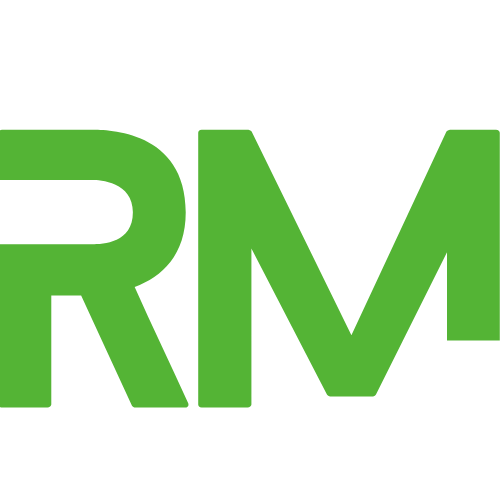How would you prefer to position your website at the top of Google search results? These top positions can lead to increased visibility, higher traffic, and potentially more business opportunities.
Table of Contents
ToggleIt’s a dream of many businesses and SEO experts. However, it’s important to remember that maintaining such a ranking is a real challenge and will require a strategic SEO approach.
According to the latest HubSpot research, approximately 75% of users hate scrolling past the first page of a search engine.
If you are not on the first page, then your audience is never going to notice you.
In this article, we will discuss some of the result-oriented SEO strategies that help me achieve success for my clients.

Step 1: Keywords Research and GAP Analysis.
Step 2: Technical SEO Audit and Backend Optimization.
Step 3. Content Optimization – Improve existing and Add new
Step 4. Actionable On-Page SEO
Step 5. Local SEO and GMB
Step 6. Backlinks Gap Analysis
Step 7. Tracking
Keywords Research and GAP Analysis.
Keyword research, along with GAP analysis, is a milestone of any website optimization. This process can help you to find accurate keywords with the following metrics:
- Competition
- Search Volume
- KD- Keyword difficulty
Here’s how an SEO expert should approach keyword research and GAP analysis:
Research Suitable Keywords:
The initial stage of keyword research involves identifying the relevant keywords that your target audience is actively searching for. We can do this through tools like SEranking, WordStream, Ahrefs, and Google’s official tools. Only select keywords with med-high search volume, low competition, and matching with the industry.
For example, I searched for the term “How to do an SEO audit” for my upcoming blog topics and found interesting results.
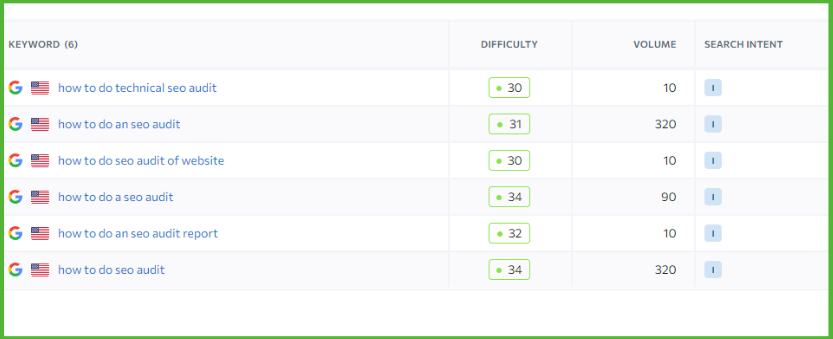
So, if you don’t have paid tools, you can start with Ahefrs Free Keyword Generator Tool.
Analyze Competitor keywords:
Another important aspect of keyword research that is my favorite as well is analyzing competitor keywords. This way, I get to know what keywords my competitors are ranking for and identify any gaps in my keyword list.
I checked out SEranking to see what keywords my competitors use for SEO audit-related queries.
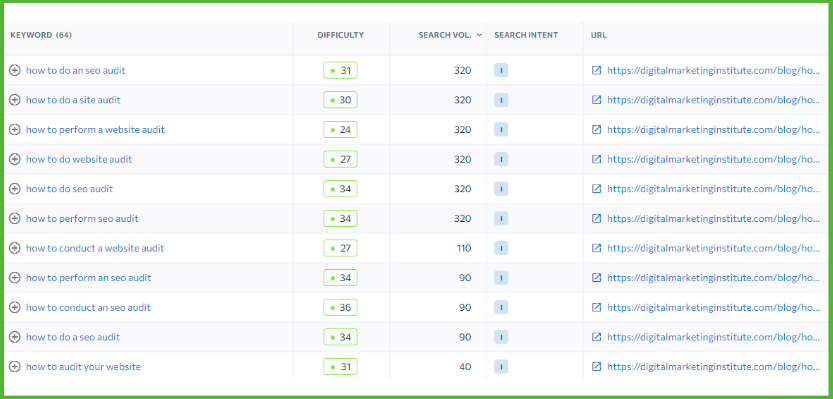
Conduct a GAP Analysis:
Once you have your list and competitor keywords, conduct a GAP analysis to identify keywords for which your website is not optimized.
The final data will help optimize your website content and on-page SEO elements.
Technical SEO Audit and Backend Optimization
Technical SEO Audit and Backend Optimization are the two pillars of winning Google’s favor. You must realize that performing a technical SEO audit is crucial because Google loves highly optimized websites and clean and well-structured code.
Let’s start with a comprehensive checklist that covers all the essential technical aspects for you.
Website Security
Website security is important for protecting against cyber attacks and signaling performance on Google. We need to make sure that our website is running with an HTTPS version.
Crawling & Indexing
Our SEO attempts will be useless if search crawlers like googlebot are unable to crawl and index the website. We need to make sure that we are not using the noindex tag through robots.txt and robots tag source code.
Here are 2 ways to check them:
# 1 Robots.txt: Check robots.txt to ensure the site is not disallowed. Default robots.txt syntax is:
# START YOAST BLOCK # --------------------------- User-agent: * Disallow: Sitemap: https://reachmandeep.com/sitemap_index.xml # --------------------------- # END YOAST BLOCK
# 2 Robots Mets tags: Look for the “noindex” tag in the website’s source code and ensure the default robot meta tags are set correctly.
You need make default robots meta tags to <meta name=’robots’ content=’index, follow, max-image-preview:large, max-snippet:-1, max-video-preview:-1′ />
HTTP Status Code
If our web pages do not return with a 200 status code, it means we have a big issue in ranking signals. All the other status codes, like 3XX, 4XX, and 5XX, should be optimized.
Usability
Your site has to be navigated and interact with users smoothly.
Website Speed
Website speed and load impact user experience and SEO rankings. Recommendations like optimizing images, minifying CSS and JavaScript, and installing plugins like WP Super Cache or W3 Total Cache can improve speed.
Server Redirects
This means that when users are redirected from one page to another, it is essential to set up page redirects like 3XX, 4XX, and 5XX correctly in order to maintain link juice.
Mobile Optimization
Mobile First Index is designed to rank websites based on their responsive design, user-friendly and fast loading times. A dedicated mobile site or responsive designs will help your website provide a seamless experience to mobile users.
Content Optimization – Improve existing and Add new.
SEO Content optimization starts with refining the website’s existing content. So we have a list of keywords with step 1 and now need to make sure that it aligns with current SEO best practices:
- Have proper keyword density
- Add H1 to H6 tags
- Including the primary keyword at least once in every 100 words.
- Add image Alt tags
- Use Internal and external linking
- Add 1000+ words of content for Low word count pages.
- Duplicate or poorly written content may lead to your website being punished by search engines. Avoid using it.
The next step is adding new content.
- Create cluster pages to support the main page.
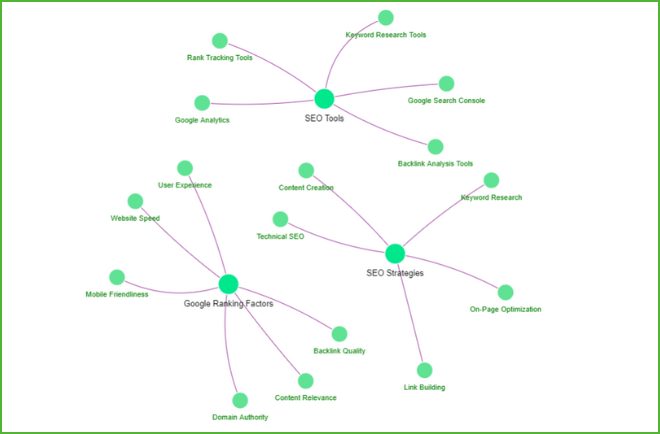
- Tailor each piece of content around specific keywords, providing well-researched information, practical tips, actionable advice, or expert opinions that your target audience can benefit from.
- Focus on query-based keywords for weekly blog posting.
- Optimize existing content with new trends.
Actionable On-Page SEO
To execute on-page SEO, you must understand the user’s search intent through keyword research. Google only displays websites higher if your web pages match a user’s queries. It also helps drive clicks from organic searches. With keywords research data, here is the on-page checklist we need to focus on:
- Optimize meta titles and description tags by adding, editing, or including target keywords for long and short versions.
- To optimize images, use descriptive image alt text and file names with target keywords.
- Internal linking can make your website easier to navigate, help spread “link juice” around, and make it simpler for Google bots to explore your site. Consider using a silo structure strategy to organize your internal links strategically.
- Add Featured snippets.
Local SEO and GMB
With Local SEO, we can improve their appearance on maps, which can help them attract more local customers. The next Step is GMB optimization and NAP consistency to rank higher in Google Map for local searches.
- The first step is to claim and optimize your Google My Business listing, ensuring all information is accurate and current.
- Next, create high-quality content that includes local keywords and nap consistency.
- Add Local schema markup.
- Add business to local directories and authority citations.
- Weekly GMB posts with GEO tagging.
Backlinks Gap Analysis
After technical SEO, on-page, and content optimization, backlinks from authority sites are the next step.
Backlinks Gap Analysis is a fundamental part of quality link-building solutions. Conduct a thorough competitor backlink analysis, compare it to yours, and find golden to build new links and improve the domain authority.
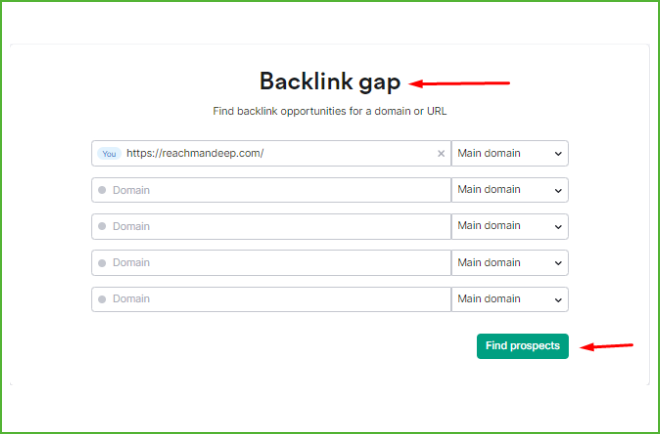
This research lets us know the exact number of incoming links for the competitor site and their quality.
Building High-Quality Backlinks:
- Inbound links from respected sources raise Google’s visibility and trust.
- Backlinks are like votes of trust and serve as crucial ranking signals.
Content Contribution
- Guest blogging and contributing to industry-related websites can generate relevant backlinks.
- Collaborate with influential bloggers and authoritative publications.
Social Media Leverage
- Promote content on social platforms, as shares significantly impact SEO.
- Engage in relevant online communities and conversations through FB groups, Reddit, and Quora.
KPI’s Tracking
SEO KPI tracking is the process of improving the SEO campaign by monitoring the key metrics. There are several metrics to track in SEO:
Watch Organic Traffic:
Track organic users through Google Analytics, which helps maintain ROI from SEO.

Monitor Keyword Rankings:
Track the keyword’s ranking using ranking tools to monitor position changes over time.
![]()
Monitor Backlinks:
Track the number and quality of backlinks pointing to your website to evaluate authority and identify potential link-building opportunities.

To rank high on Google, A reminder to focus on creating top-notch content, providing a great user experience, and nailing the technical aspects of SEO.
You’ve got to be patient, keep working as Google algorithms change, and be ready to roll when Google pushes you up. Stay active and focus on giving your audience something valuable.
Have you still got questions? Here are some of the answers you might be looking for.
Frequently Asked Questions
What are the key factors that determine a website’s ranking on Google?
To rank higher on Google, you can start by optimizing your website with relevant keywords, improving site speed, creating quality content, earning backlinks from reputable websites, optimizing meta tags, optimizing images, etc. Implementing SEO best practices consistently can help boost your search ranking.
Why am I not ranking higher on Google?
There could be many reasons why your website is not ranking higher on Google, such as limited keyword optimization, poor site structure, lack of quality content, slow site speed, and insufficient backlinks. Conduct a complete website audit to identify areas for improvement and focus on implementing effective SEO strategies to increase your ranking.
Can you pay Google to rank higher?
You can’t pay Google to make your website rank higher in the organic search results, even if you use Google Ads for paid advertising. Your website’s ranking in organic search results is based on factors like relevance, keyword optimization, user experience, backlinks, etc. Using paid ads can help more people see your website, but it won’t boost organic results.
Is it necessary to have a lot of backlinks to rank higher on Google?
While backlinks are essential for ranking higher on Google, remember that having many is unnecessary. Eventually, after years of Google algorithm updates, it is clear that quality helps rank higher than quantity. A couple of backlinks from trusted sites that have high quality can improve your ranking more considerably than many low-quality backlinks.
How important is website content in ranking higher on Google?
Website content is extremely important in ranking higher on Google. With E-E-A-T content guidelines, we must ensure that our content is original, well-written, informative, and engaging. Updating and regularly adding new informative content can notify search engines that your website is active.
How can I optimize my website for mobile to improve Google rankings?
There are several steps you can take to optimize your website for mobile and improve your Google rankings:
- Use a responsive design
- Optimize your images
- Improve page speed
- Use mobile-friendly fonts and font sizes
- Enable Accelerated Mobile Pages (AMP)
- Test your website on multiple devices
